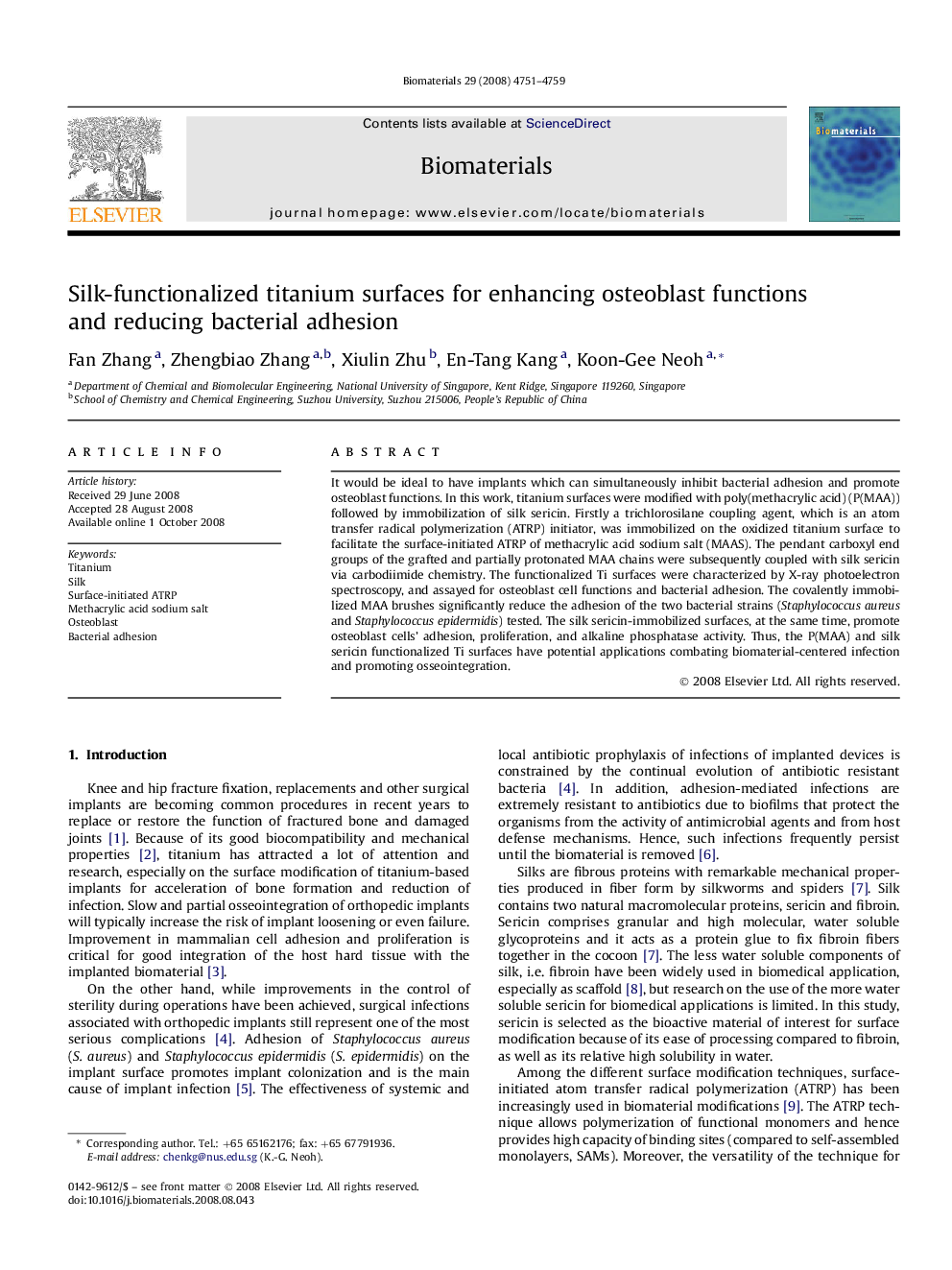| Article ID | Journal | Published Year | Pages | File Type |
|---|---|---|---|---|
| 9065 | Biomaterials | 2008 | 9 Pages |
It would be ideal to have implants which can simultaneously inhibit bacterial adhesion and promote osteoblast functions. In this work, titanium surfaces were modified with poly(methacrylic acid) (P(MAA)) followed by immobilization of silk sericin. Firstly a trichlorosilane coupling agent, which is an atom transfer radical polymerization (ATRP) initiator, was immobilized on the oxidized titanium surface to facilitate the surface-initiated ATRP of methacrylic acid sodium salt (MAAS). The pendant carboxyl end groups of the grafted and partially protonated MAA chains were subsequently coupled with silk sericin via carbodiimide chemistry. The functionalized Ti surfaces were characterized by X-ray photoelectron spectroscopy, and assayed for osteoblast cell functions and bacterial adhesion. The covalently immobilized MAA brushes significantly reduce the adhesion of the two bacterial strains (Staphylococcus aureus and Staphylococcus epidermidis) tested. The silk sericin-immobilized surfaces, at the same time, promote osteoblast cells' adhesion, proliferation, and alkaline phosphatase activity. Thus, the P(MAA) and silk sericin functionalized Ti surfaces have potential applications combating biomaterial-centered infection and promoting osseointegration.
